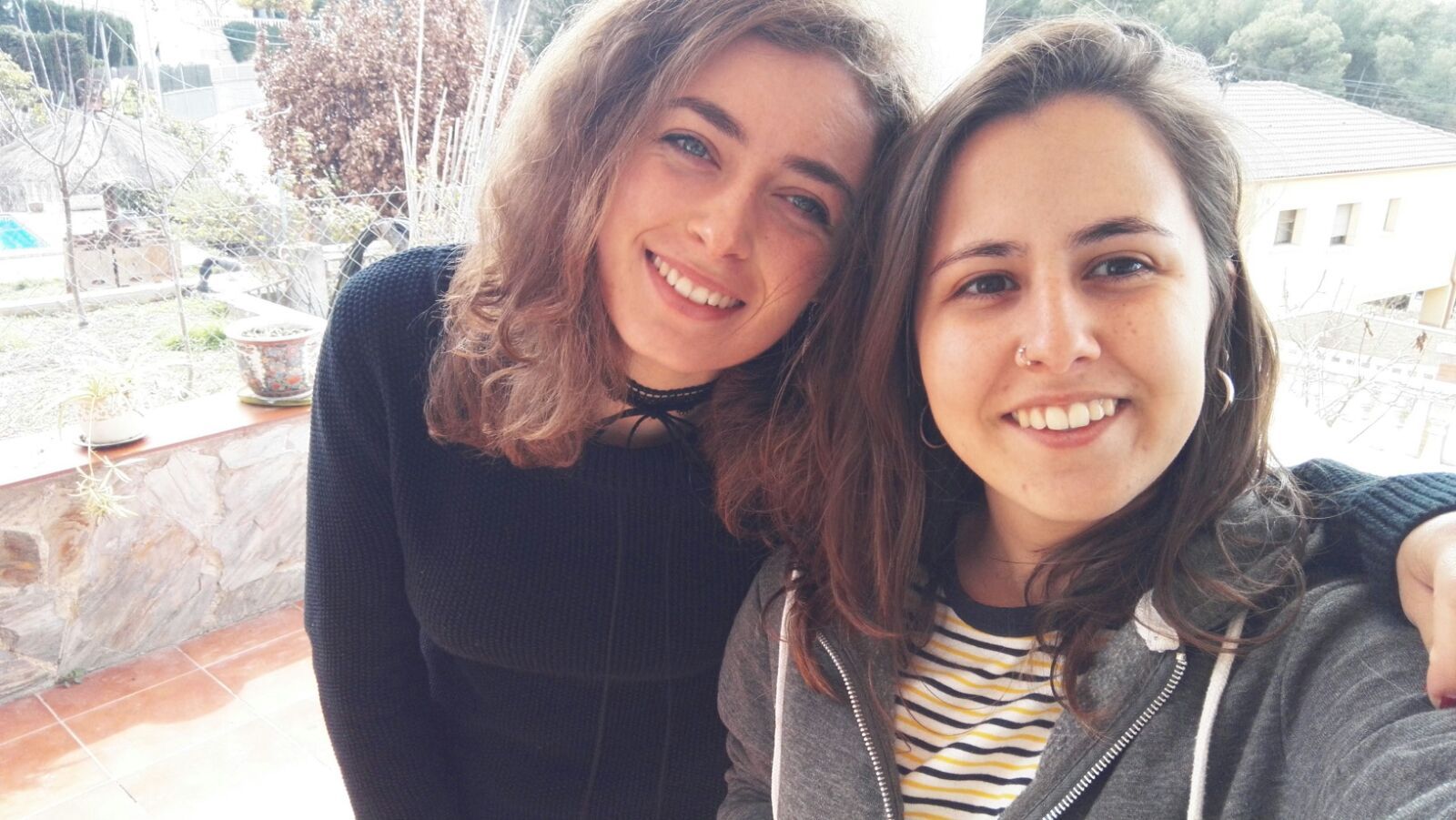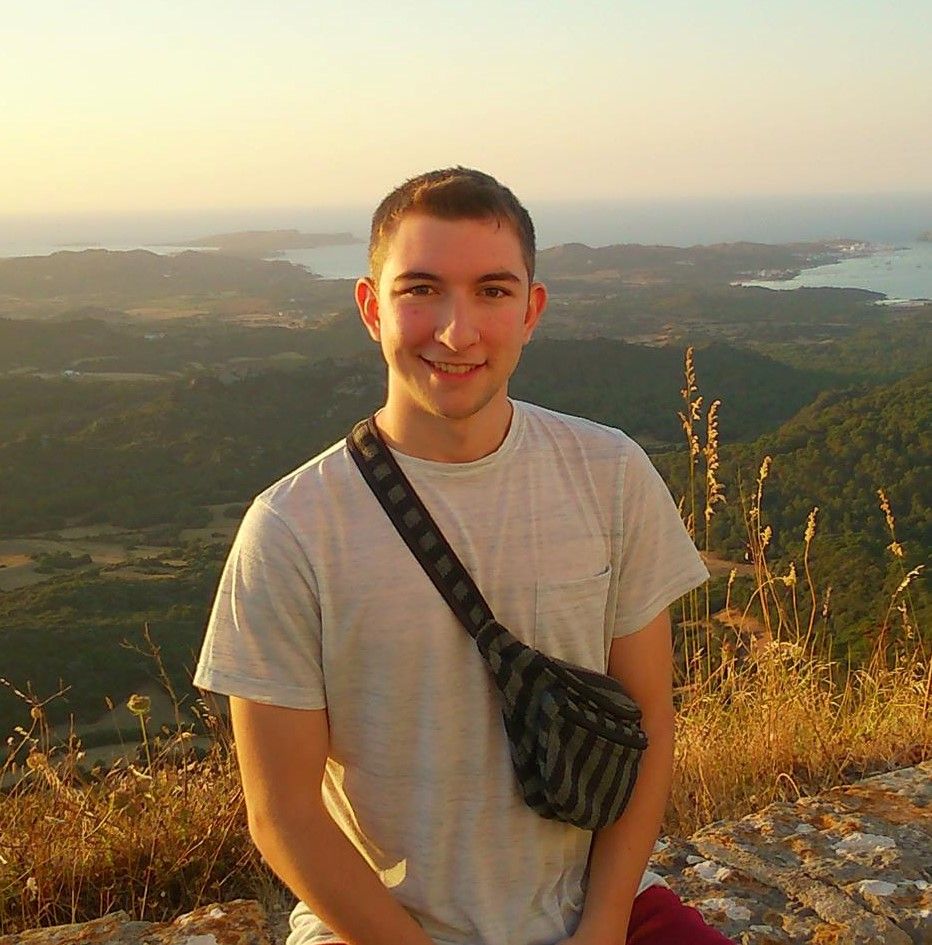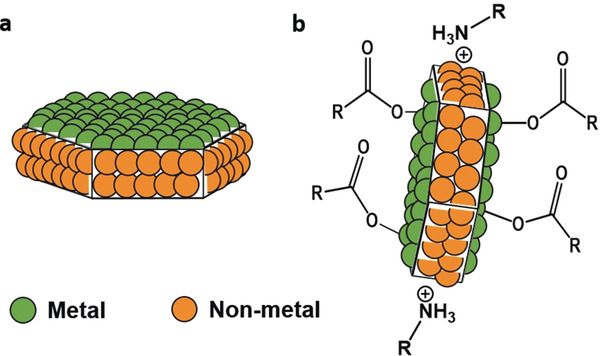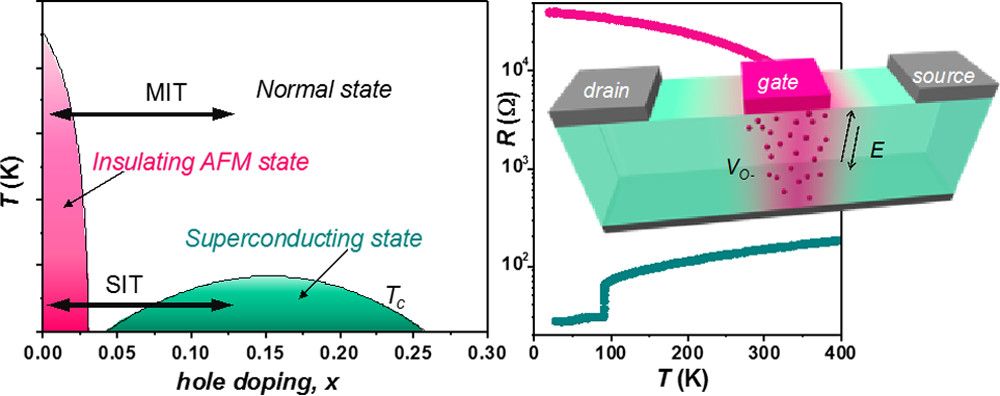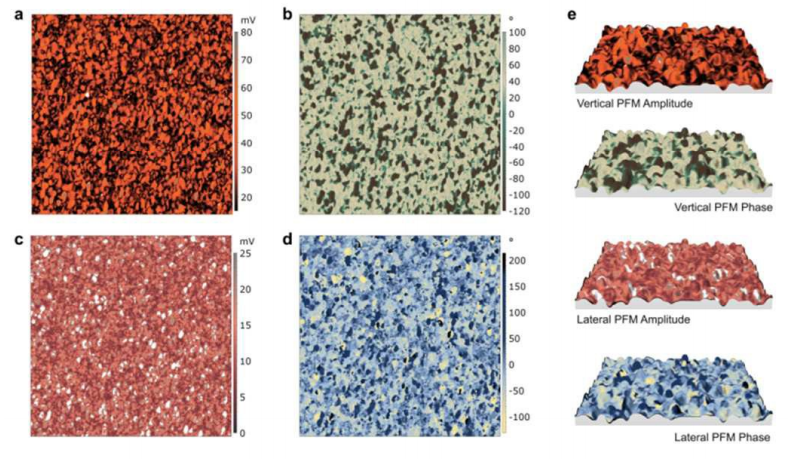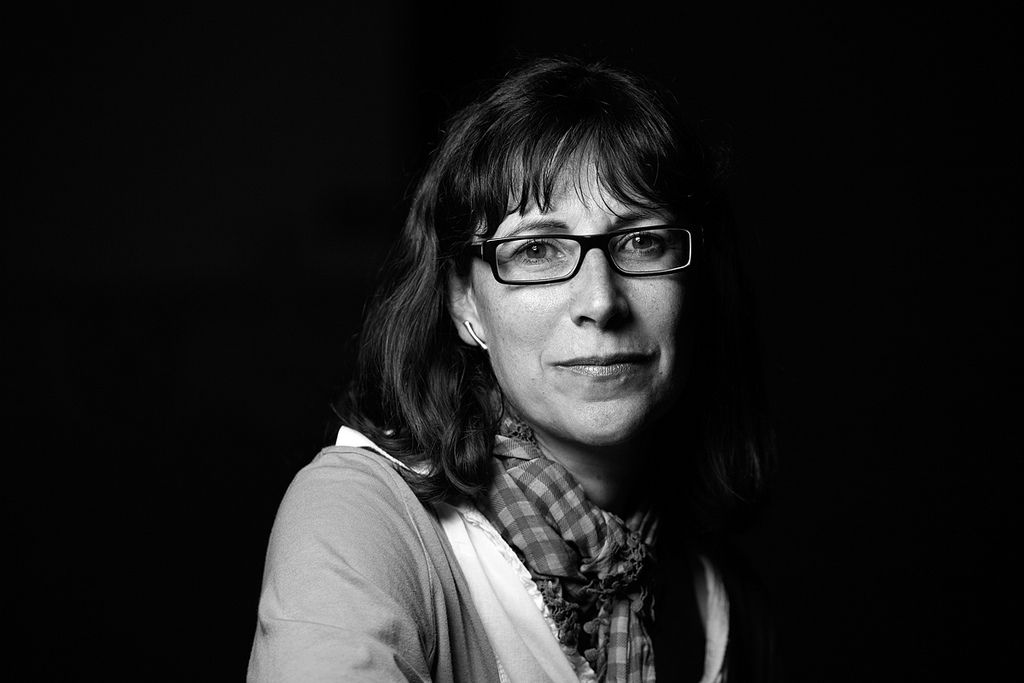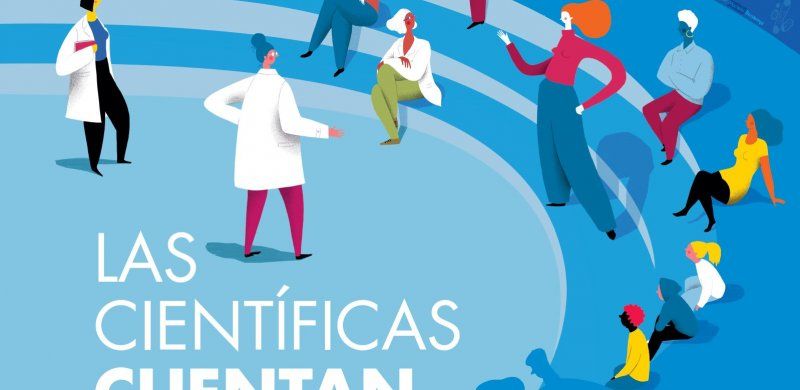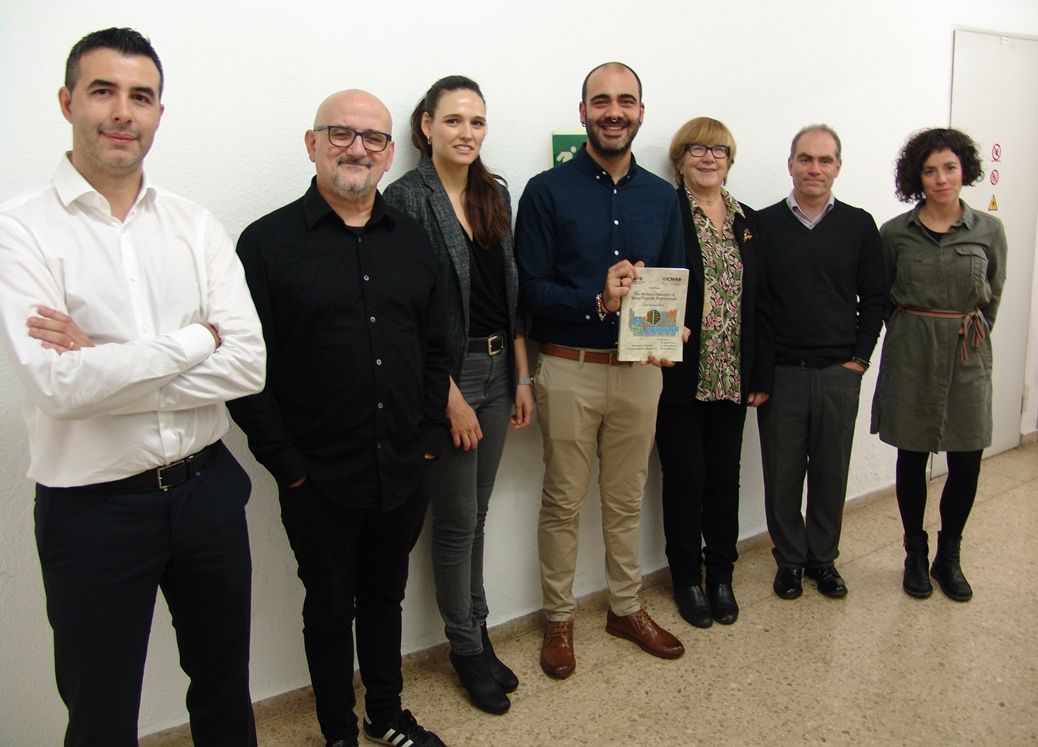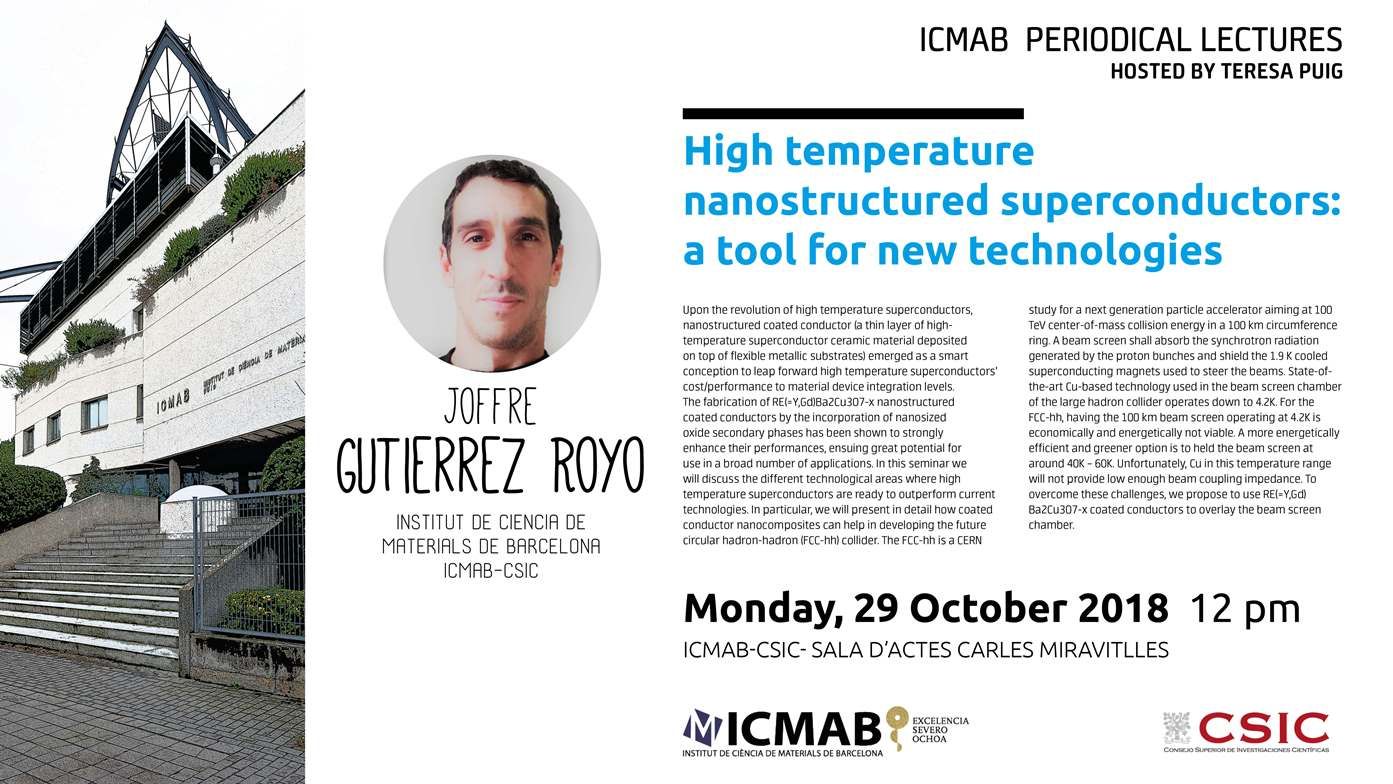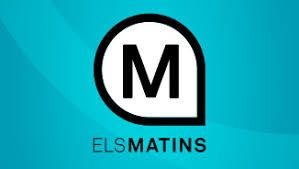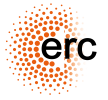Author: Mar Tristany
Welcome to Jordi Alcalà, our new PhD student!
Written by Mar Tristany on . Posted in Welcome.
Faceted‐Charge Patchy LnF3 Nanocrystals with a Selective Solvent Interaction
Written by Mar Tristany on . Posted in Methodologies for materials science and nanotechnology, Scientific Highlights.
A fast and single‐step preparation of patchy LnF3 faceted‐charge nanocrystals are described. These hexagonal faceted nanocrystals allow the spontaneous selective adsorption of cations or anions in the different faces, producing stable and well‐defined patches of different charge. The mechanism for the formation of the patches and the properties of the obtained nanocrystals were characterized by a combination of experimental techniques and all‐atomic molecular dynamics simulations. The spontaneous dual‐charged surface as well as the luminescence effects that can be achieved by doping host–LaF3 systems make these new nanocrystals interesting both from a fundamental point of view and for a wide range of applications.
Electrochemical Tuning of Metal Insulator Transition and Nonvolatile Resistive Switching in Superconducting Films
Written by Mar Tristany on . Posted in Materials for energy and enviroment, Scientific Highlights.
Modulation of carrier concentration in strongly correlated oxides offers the unique opportunity to induce different phases in the same material, which dramatically change their physical properties, providing novel concepts in oxide electronic devices with engineered functionalities. This work reports on the electric manipulation of the superconducting to insulator phase transition in YBa2Cu3O7−δ thin films by electrochemical oxygen doping. Both normal state resistance and the superconducting critical temperature can be reversibly manipulated in confined active volumes of the film by gate-tunable oxygen diffusion. Vertical and lateral oxygen mobility may be finely modulated, at the micro- and nano-scale, by tuning the applied bias voltage and operating temperature thus providing the basis for the design of homogeneous and flexible transistor-like devices with loss-less superconducting drain–source channels. We analyze the experimental results in light of a theoretical model, which incorporates thermally activated and electrically driven volume oxygen diffusion.
Direct and Converse Piezoelectric Responses at the Nanoscale from Epitaxial BiFeO3 Thin Films Grown by Polymer Assisted Deposition
Written by Mar Tristany on . Posted in Materials for information science and electronics, Scientific Highlights.
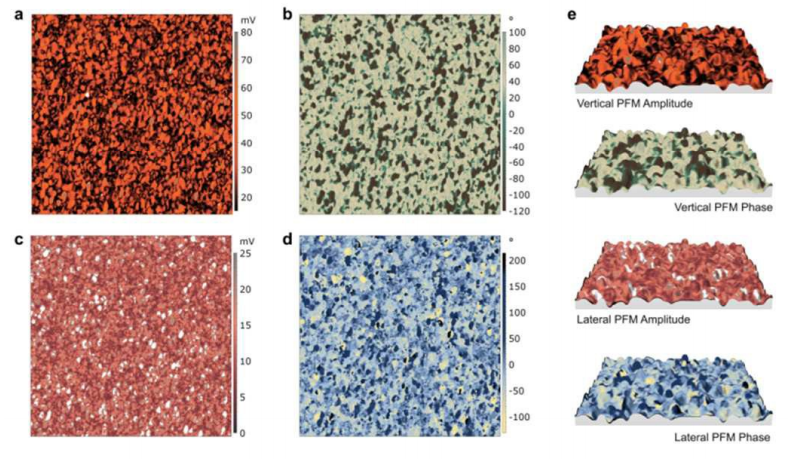
José M. Vila-Fungueiriño, Andres Gomez, Jordi Antoja-Lleonart, Jaume Gazquez, César Magén, Beatriz Noheda and Adrian Carretero-Genevrier. Nanoscale, 2018
We use an original water-based chemical method, to grow pure epitaxial BiFeO3 (BFO) ultra-thin films with excellent piezoelectric properties. Particularly, we show that this novel chemical route produces a higher natural ferroelectric domain size distribution and coercive field compared to similar BFO films grown by physical methods. Moreover, we measured the d33 piezoelectric coefficient of 60 nm thick BFO films with a direct approach, using Direct Piezoelectric Force Microscopy (DPFM). As a result, first piezo-generated charge maps of a very thin BFO layer were obtained applying this novel technology. We also performed a comparative study of the d33 coefficients between standard PFM analysis and the DPFM microscopy showing similar values i.e. 17 pm/V and 22 pC/N respectively. Finally, we proved that the directionality of the piezoelectric effect in BFO ferroelectric thin films is preserved at low thickness dimensions demonstrating the potential of chemical processes for the development of low cost functional ferroelectric and piezoelectric devices.
Teresa Puig on Terrassa Digital radio!
Written by Mar Tristany on . Posted in ERC projects (ULTRASUPERTAPE and IMPACT), Outreach, Press.
Fifteen ERC grantees telling their story in simple words #LasCientíficasCuentan
Written by Mar Tristany on . Posted in ERC projects (ULTRASUPERTAPE and IMPACT), News, Outreach.
The following article appeared in the ERC Newsletter on 26 October 2018. It is about the project #LasCientíficasCuentan, which explalins complex science through the voice of fifteen female ERC grantees in Spain. From ICMAB, Teresa Puig and Marta Mas-Torrent participated in the project, funded by the FECYT and the FGCSIC. They give talks, participate in roundtables, and appear in some videos explaining their research!
Congratulations Dr. Jordi Martínez: new SUMAN graduate!
Written by Mar Tristany on . Posted in Theses.
The Surface Chemistry of Metal Fluoride Nanocrystals
Date: Wednesday, 31 October 2018 Time: 11 am
Venue: Sala de Graus, Facultat de Ciències, UAB
Time: 11 am
Venue: Sala de Graus, Facultat de Ciències, UAB
- Dr. Susagna Ricart, ICMAB
- Dr. Ramon Yañez, UAB
- Dr. Jordi Faraudo, ICMAB
- President: Dr. Daniel Maspoch, ICREA Research Professor, Supramolecular NanoChemistry & Materials Group, ICN2
- Secretary: Dr. Anna Llordes, Solid Electrolyte Groups, Asociate Researcher (Ikerbasque Fellow) CIC Energigune, Basque Country, Spain
- Vocal: Prof. Maria Ibañez, Assistant Professor, Functional Nanomaterials, Institute of Science and Technology (IST) Austria
ICMAB Periodical Lecture_Joffre Gutiérrez High temperature nanostructured superconductors: a tool for new technologies”_29 Oct_12 pm
Written by Mar Tristany on . Posted in News.
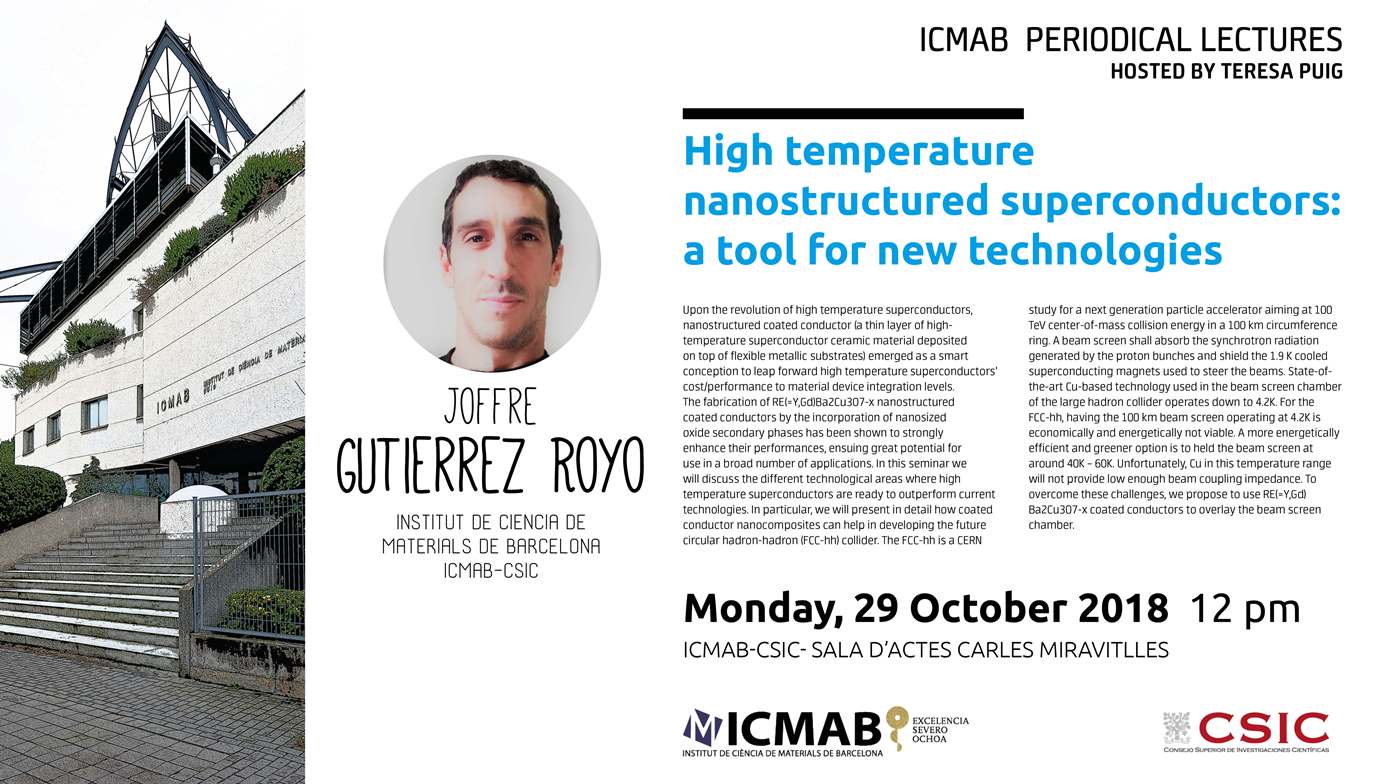
Superconducting materials and levitation of magnets with Teresa Puig in “Els Matins de TV3
Written by Mar Tristany on . Posted in ERC projects (ULTRASUPERTAPE and IMPACT), Press.
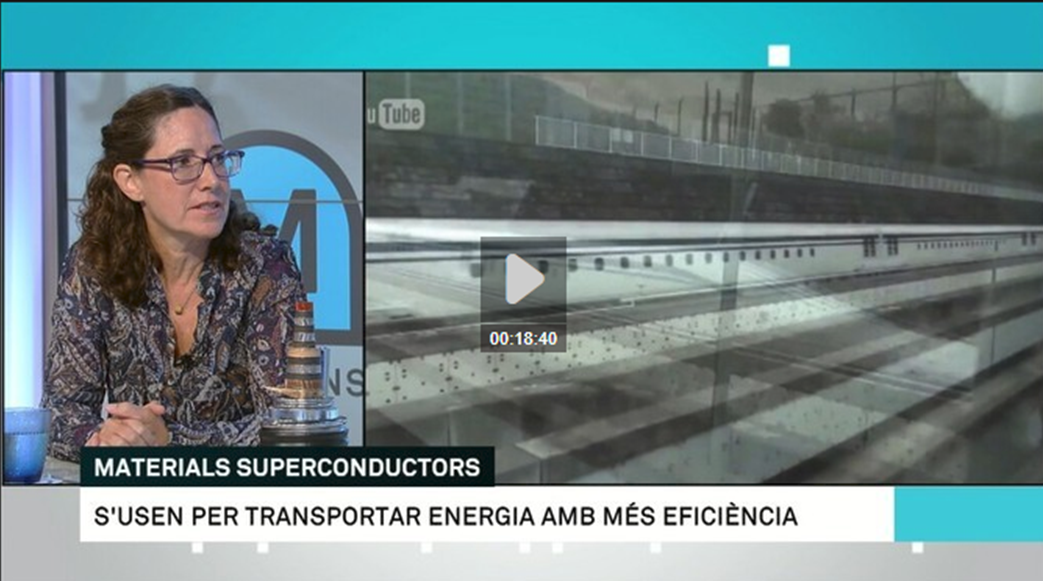 On Thursday 11 October 2018, the programme “Els Matins de TV3”, directed by Lídia Heredia, interviewed researcher Teresa Puig about the superconducting materials, in their section devoted to science, and presented by Daniel Arbós. The section, of more than 18 minutes long, explains what superconducting materials are, what are their main applications, and shows the levitation experiment.
Enjoy the view!
video
On Thursday 11 October 2018, the programme “Els Matins de TV3”, directed by Lídia Heredia, interviewed researcher Teresa Puig about the superconducting materials, in their section devoted to science, and presented by Daniel Arbós. The section, of more than 18 minutes long, explains what superconducting materials are, what are their main applications, and shows the levitation experiment.
Enjoy the view!
video
